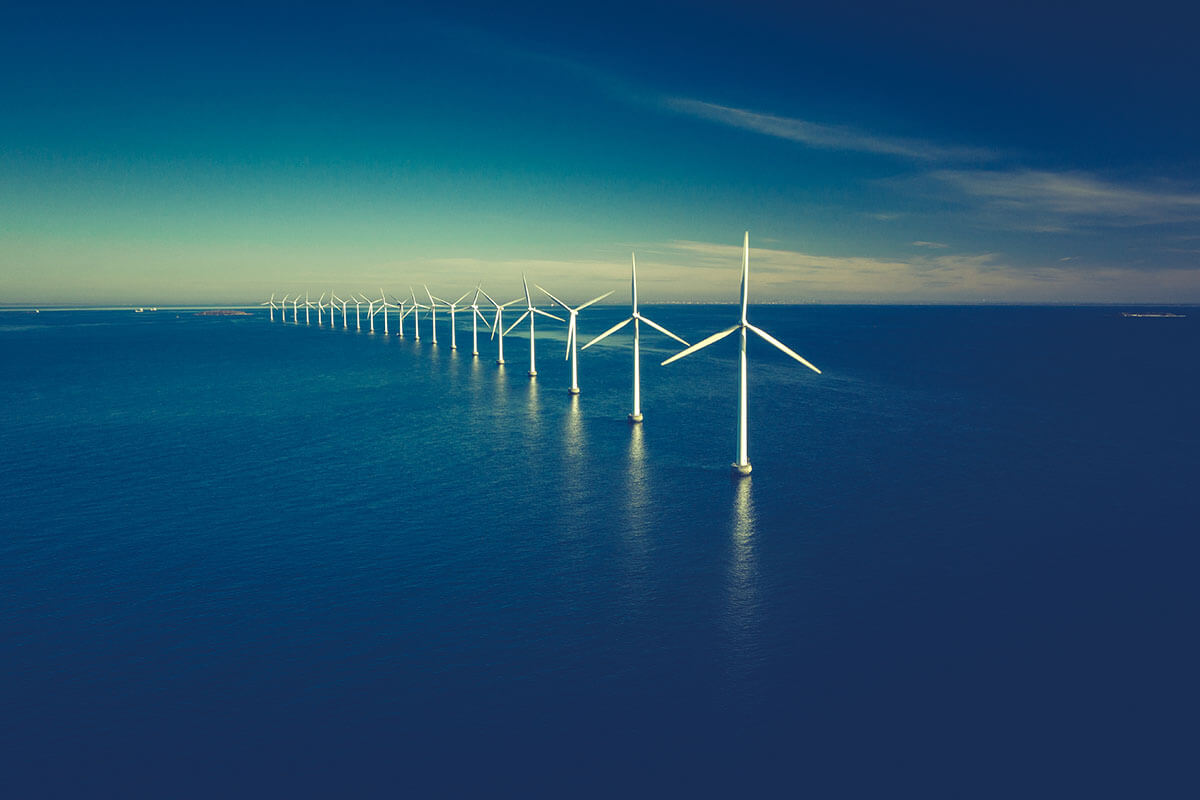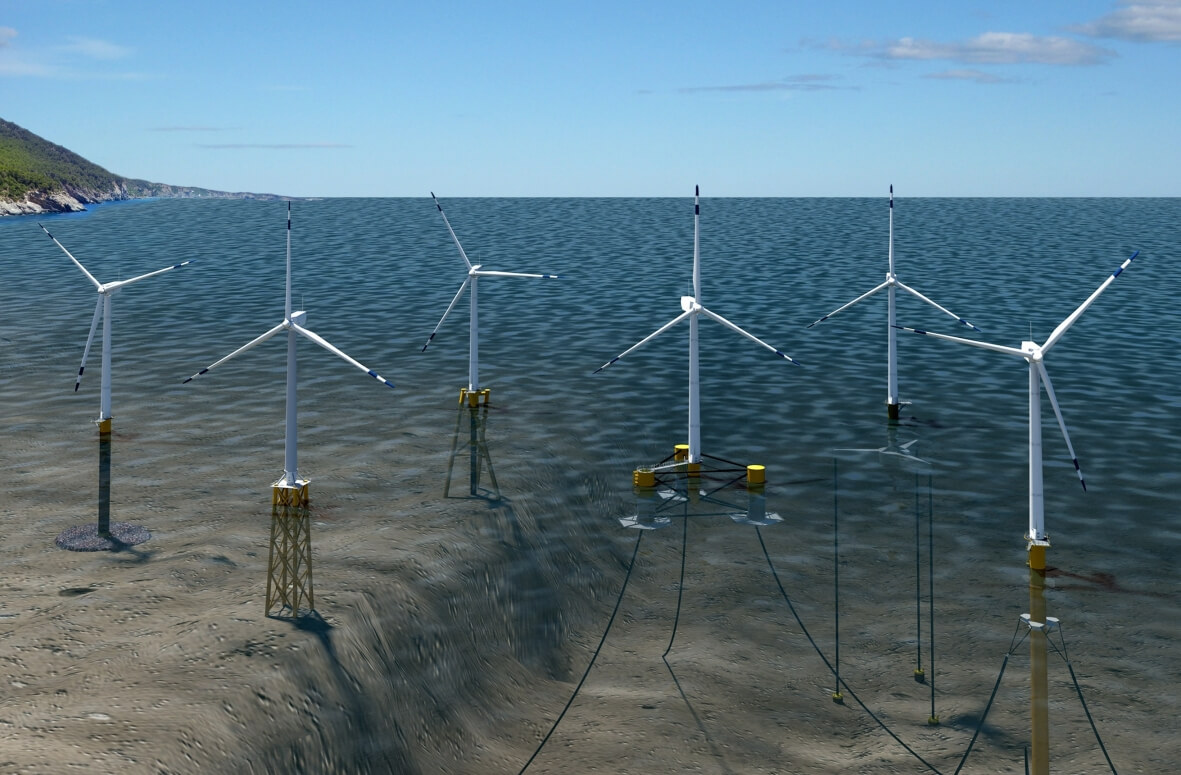Technology
The global boom in offshore wind has accelerated technological developments, such as the size and design of turbines and the advancement of foundation design, that enable us to upscale offshore wind rapidly.
How offshore wind works
Offshore wind turbines generate power out at sea. Electricity or hydrogen is then transported to a major connection point back on land through a series of cables and substations, where electricity is distributed to power homes and businesses.
There is no single way to build and operate an offshore wind farm and much depends on site-specific site conditions.
The two primary technologies for offshore wind energy are: fixed foundation turbines, which are secured directly to the seabed, and floating turbines, which are mounted on a floating foundation secured by anchored cables to the seabed.

Why floating offshore wind turbines?
Some of Australia’s offshore wind resources are in deeper water, rendering fixed foundation turbines unworkable. As floating turbine technology develops further and becomes cheaper, we anticipate greater uptake of offshore wind farms in Australia.
Floating foundations can unlock great potential in Australia, as they allow access to high-quality deeper water sites that were previously inaccessible. Ongoing turbine size expansion means offshore wind can upscale rapidly, reducing the need for lengthy and complex investments in onshore transmission and delivering a lower cost of energy.
This exciting technology has reached commercialisation and is projected to be deployed in greater numbers over the next decade.
